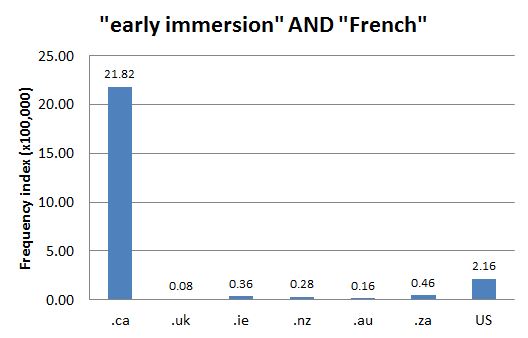DCHP-2
early immersion DCHP-2 (October 2016)
n. — Education, French relations
a program in which English-speaking students are instructed in French in most subjects from the age of five or six.
Type: 1. Origin — OED-3 defines immersion as a 'method or system of teaching (or learning) a foreign language in an environment where all communication is conducted in the language'. In Canada, the term almost always refers to the French language. The number of courses that must be taught in French varies by province and school board. In BC, for example, Kindergarten to Grade 3 classes are exclusively taught in French, with the percentage then dropping in subsequent years after Grade 3, ending at about 13% in Grade 12 (see VSB reference). This program complements the late immersion program, for which students may enroll in Grades 6 or 7 (COD-2, s.v. "late immersion"). Internet search results indicate that early immersion appears most frequently in Canada (see Chart 1).
See also COD-2, s.v. "early immersion", which is marked "Cdn".See also: core French French immersion late immersion
References:
- COD-2
- OED-3 s.v. "immersion" Accessed 23 Jul. 2014
- VSB "Early French Immersion" Accessed 23 Jul. 2014
Images:
Chart 1: Internet Domain Search, 19 Jul. 2012
